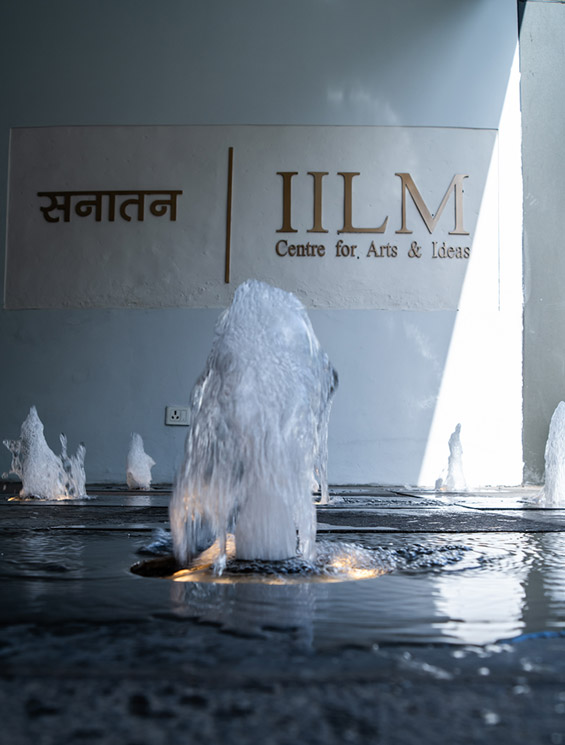Named by the esteemed cultural luminary Ashok Vajpeyi, Sameksha is more than just an art gallery - it is a space for deep reflection, interpretation, and engagement with visual storytelling. Rooted in the ethos of critical appreciation and thoughtful discourse, Sameksha stands as a testament to the power of art in shaping perspectives and evoking dialogue.
Housed within a cultural haven where every space embodies a unique purpose - Sakshaat as an auditorium for performances, Sameep as an intimate performance space, Sahakaar for creative workshops, Sangati for meaningful conversations, and Sadhana as a sanctuary of knowledge - Sameksha seamlessly aligns with this vision. It offers artists and audiences alike a dedicated space to explore aesthetics, narratives, and the evolving language of contemporary and traditional art.
With its carefully curated exhibitions and immersive artistic experiences, Sameksha is not just a gallery but a vibrant confluence of ideas, emotions, and creative expressions - a space where art is not only seen but truly felt and understood.
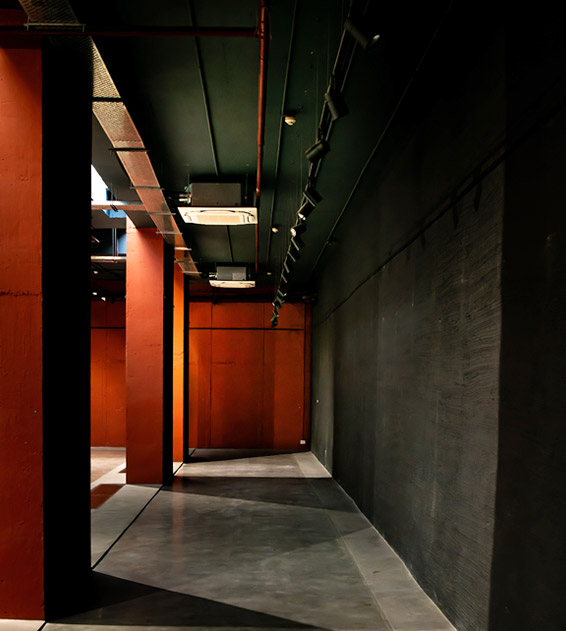
The Journey of IILM Centre for Arts and Ideas
In 1990, Sanatan, Sangeet and Sanskriti was founded by Dr Kulwant Rai, Shri NKP Salve, Shri Atal Behari Vajpayee, Justice V.B Eradi, Pandit Birju Maharaj, and Shri MN Krishnamani. with a vision to establish a space that fosters integration of music, performing arts and visual arts under one roof in the heart of New Delhi.
Art gallery: An art gallery will be set up to showcase various forms of art including paintings, drawings, photography and sculpture.
Performance space: The centre will have a dedicated space for music, dance and other performances.
Library: A library will be set up with a collection of books, journals, and other resources related to music, dance and art.
Workshop and class spaces: Along with an auditorium of 140 seating will be used for educational activities, including art classes, music lessons and dance workshops. The area outside the auditorium has a breakout space for pre discussions and several breakout rooms for further discussions.
Original Charter: The original charter of the Sanskriti, as agreed by the founders, is given below:
“Sanatan” in Sanskrit means “eternal” or “time-less”. The coming into existence of Sanatan Sangeet Sanskriti is the result of the efforts of a group of lovers of music and dance to find a Promoting - Forum - Cum - Research - Institute for music, dance and allied arts.
In India it is believed that the divine principle which was all pervading, before becoming and evolving into the material words viz., the Earth, the Planets, the Sun & the Stars which are numberless, was in the form of sound – “Nadha Brahman” - which is symbolised by the mystic word “OM”.
Music, dance and art have a unifying effect. They transcend religion, language and other seemingly dividing factors. These three are also one. While dance is music in action, art is a kind of frozen music. It is necessary to promote and encourage music, dance and art for the sake of harmony, unity and world peace. Music, dance and art will enable man to understand himself better and to realize his true nature.
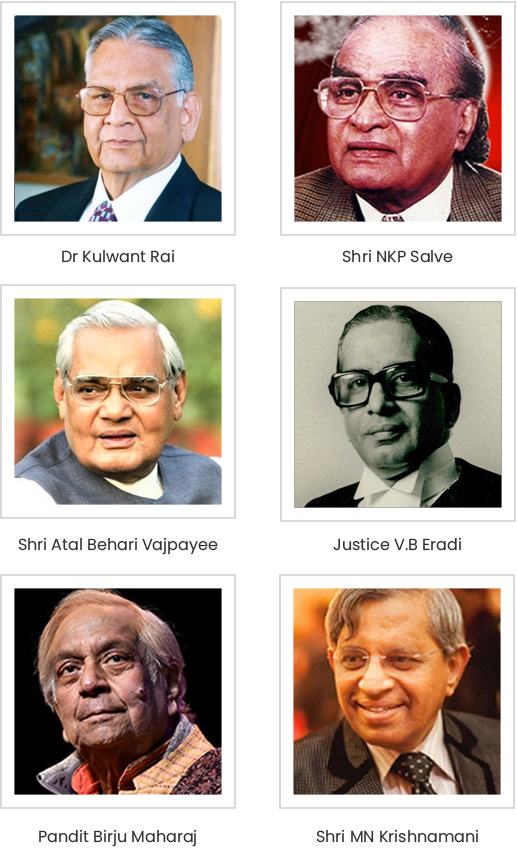
The founders constituted two National Awards to be presented annually.
The first award, ‘Sanatan Nritya Samman’ is to honour a Senior Artist for his/her Personal Excellence and outstanding contributions to Indian Classical Music/Dance.
The second award, ‘Sanatan Sangeet Puraskar’ will be given to a young upcoming artist in recognition of his/her talent and potential for excellence.
Over time, the awardees have included
- Pandit Bhimsen Joshi, who received the first Samman in 1993, from the Hon’ble Prime Minister of India, Shri P.V Narasimha Rao.
- Shri Lalgudi G Jayaraman in 1994 by Hon’ble Vice President of India, Shri K R Narayanan.
- Smt Sonal Mansingh in 1995 by the Prime Minister of Mauritius, Shri Anerood Jugnauth Smt Kishori Amonkar in 1996 by Hon’ble Prime Minister, Shri H D Deve Gowda.
Other awardees included, Kumari Vijaya Lakshmi, Kavita Dwibedi, A R Rehman and Mandolin Srinivas were the recipients of the Sanatan Puraskar, Shri Hari Prasad Chaurasia, Ustad Amjad Ali Khan, Pandit Birju Maharaj, Dr L Subramanium and Pandit Shiv Kumar Sharma. Recipients of the Puraskar include Smt Arushi Mudgal, Smt Monisa Nayak, Kumari Mythili Prakash and Shri Pushkar Lele.
Sanatan Sangeet Sanskriti has been hosting a literary festival since 2017
Words in the Garden - a celebration of literature, arts and ideas, in collaboration with India International Centre, was launched in 2017. This annual festival, specially curated, is held to celebrate the incredible creativity, imagination and ideas that the city of Delhi generates, sustains and embodies.
Each year, the festival focussed on different themes – “Meer Ki Dilli”, “Ghalib ki Dilli”, “Bapu Ki Dilli”, “Dilli ki Sanskriti” and “Dilli ki Mahilayen” – and explored them through discussions, dialogues, readings, recitals, exhibitions, workshops and more. There were specially curated themed meals, theatre, cinema and performances. Words in the Garden has attracted more than 250 artists, authors, and eminent speakers in these years.
After a hiatus of a few years, we have recommenced the awards to young artists and achievers since 2023.
Sanatan Sangeet Puraskar Awardees, 2023:
- Sanatan Sangeet Puraskar in the category of Music – Smt Sawani Mudgal
- Sanatan Sangeet Puraskar in the category of Dance – Smt Shivani Salhotra
- Sanatan Sangeet Puraskar in the category of Art – Smt Baaraan Ijlal
- Sanatan Sangeet Puraskar in the category of Literature - Smt Poonam Arora
- Sanatan Sangeet Puraskar in the category of Ideas – Shri Tarun Nangia
Sanatan Sangeet Puraskar Awardees, 2024:
- Sanatan Sangeet Puruskar in the category of Literature - Sudeep Sen
- Sanatan Sangeet Puruskar in the category of Art - Vibha Galhotra
- Sanatan Sangeet Puruskar in the category of Dance - Navina Jafa
- Sanatan Sangeet Puraskar in the category of Music - Sudha Raghuraman
- Sanatan Sangeet Puraskar in the category of Ideas - Aarti Gupta
- Sanatan Sangeet Puraskar Awardees 2025:
- Sanatan Sangeet Puruskar in the category of Ideas - Shweta Rajpal Kohli
- Sanatan Sangeet Puruskar in the category of Literature - Jyotsna Mohan
- Sanatan Sangeet Puruskar in the category of Art. - Allen Shaw
- Sankaran Sangeet Puruskar award in the category of Dance - Ragini Maharaj
- Sankaran Sangeet Puruskar in the category of Music - Arushi Bhargava
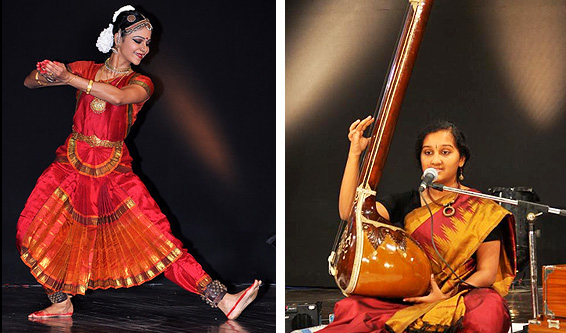
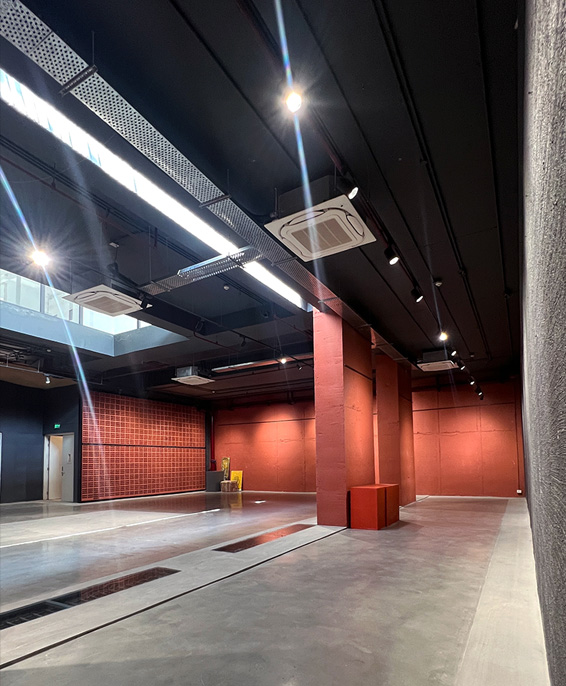
As we look to the future, we continue to push boundaries with fresh perspectives and collaborations, ensuring that Sameksha remains a beacon for creativity and innovation.
The objective of the gallery is to provide a platform for young talent and build an ecosystem that nurtures upcoming talent. This will be achieved by way of artist residencies that will provide artists space to introspect and reflect on their practice and encourage the artists. The residencies will bring together a well curated group of artists to spend a short duration of time together and engage in meaningful dialogue among the peers and special speakers who will also engage with the artists. This will culminate into an exhibition that presents the outcome of the residency.
As you enter Sameksha, you are immediately immersed in a spacious and airy environment. The gallery's large rectangular space is dominated by a stunning double height ceiling, which creates a sense of grandeur and openness. This expansive verticality allows for dramatic installations and exhibitions that can be viewed from multiple angles, providing a dynamic visual experience.
Natural light pours in through large windows, illuminating the space with a warm glow that enhances the colors and textures of the artworks on display. The rectangular layout provides ample room for visitors to explore.
Whether you are an art enthusiast, a collector, or simply someone who appreciates beauty, the gallery's unique architecture and thoughtful design make it an ideal setting to engage with art in all its forms.
Educational Programs at Sameksha
- Beyond its stunning exhibitions, Sameksha is committed to fostering a deeper understanding and appreciation of art through its educational programs. Our classes in Indian art appreciation and Indian art history offer a unique opportunity for art enthusiasts to engage and learn about art practice in India.
- This approach emphasizes the gallery's role as a hub for both artistic display and educational enrichment, highlighting how its classes enhance the overall visitor experience.
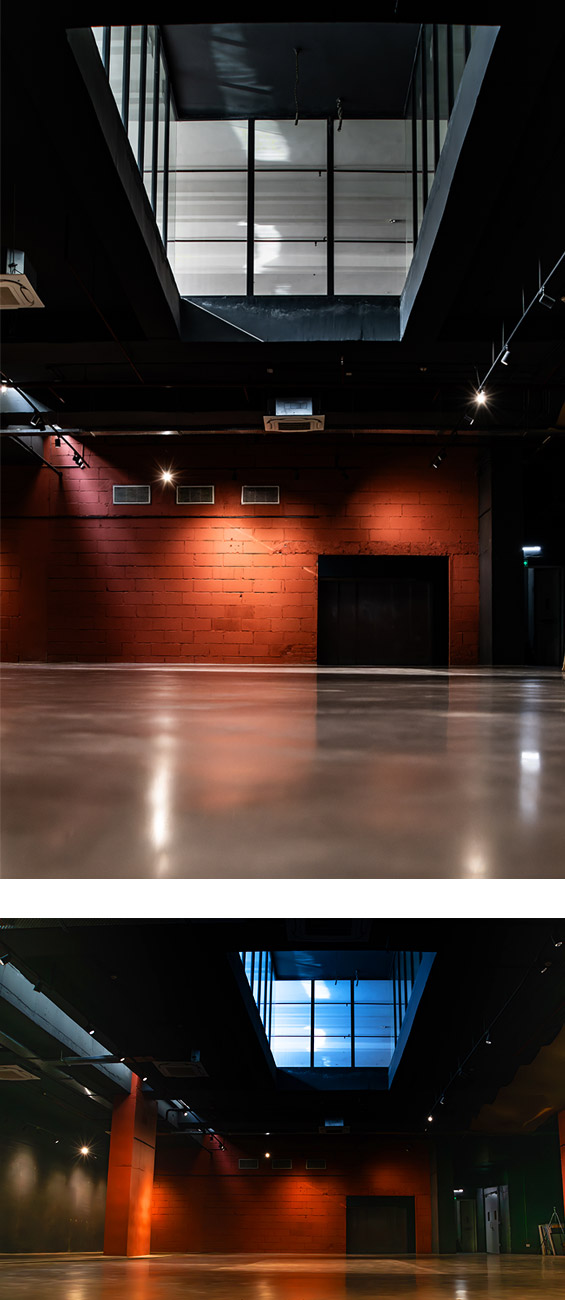
The activities/objectives envisaged were
- To shape the talents and to enable others to learn and appreciate the art.
- To provide facilities for teaching music and dance and also facilities for research.
- Holding seminars, conferences, meetings and exhibitions and publishing of books, souvenirs, periodicals etc., in connection with and in furtherance of the objectives of the Sanskriti.
- Awards to outstanding artists to honour them; And for young artists to encourage them.
The Sanatan Sangeet Sanskriti has been established with the above objectives in view and proposes to engage in the following activities:
- To shape the talents and to enable others to learn and appreciate the art.
- To provide facilities for teaching music and dance - classical and light, antique and modern, Carnatic and Hindustani and dance - particularly Bharatnatyam, Odissi, Kathak, Kathakali and Mohiniyattam.
- Providing facilities for research in music, dance and art.
- Conducting competitions for young artists in music, dance and to award prizes to encourage them to develop.
- Awards to outstanding artists to honour them.
- Holding seminars, conferences, meetings and exhibitions.
- Publishing of books, souvenirs, periodicals etc., in connection with and in furtherance of the objectives of the Sanskriti.
Sanatan has the following facilities:
- Art gallery: An art gallery will be set up to showcase various forms of art including paintings, drawings, photography and sculpture.
- Performance space: The centre will have a dedicated space for music, dance and other performances.
- Library: A library will be set up with a collection of books, journals, and other resources related to music, dance and art.
- Workshop and class spaces: Along with an auditorium of 140 seating will be used for educational activities, including art classes, music lessons and dance workshops. The area outside the auditorium has a breakout space for pre discussions and several breakout rooms for further discussions.
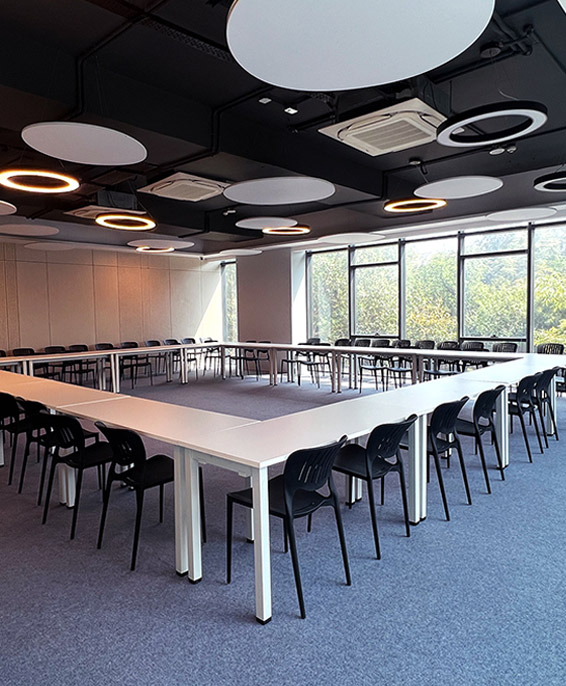
The Vision for SANATAN is...
- SANATAN would strive to promote, support and project the continuum, vibrancy, innovative spirit of Indian classical performing arts; It would endeavour to enhance their informed appreciation and encourage critical thinking about them.
- SANATAN would provide spaces for display of visual arts, to promote critical appreciation of them and create occasions for exchange of ideas about them.
- SANATAN would have a select library devoted to visual and performing arts which would also initiate, from time to time, talks, panel discussion etc. relating to arts, literature and ideas.
- SANATAN, with a view to developing a community of aesthetes whose interest would cover various arts, literature, ideas etc. organise art appreciation courses, both short and long terms.
- SANATAN would aspire to be a destination for artists, authors and writers, theatre persons, musicians and dancers, person of ideas to meet, for informal dialogues and exchanges.
- SANATAN may overtime organise well-curated festivals of Sanatan awardees (multi arts), young classical performers (music and dance), young film makers (cinema and documentary), young scholars (academics), young poets (poetry) etc.
- Located close to Gandhi Peace Foundation, Gandharva Mahavidyalaya and Rajendra Bhavan, SANATAN would take inspiration from Gandhian ideas, aesthetic vision embedded in our classical heritage and blameless life.
- SANATAN would have an advisory council consisting of eminent experts and connoisseurs of arts, culture and ideas to guide its path.
